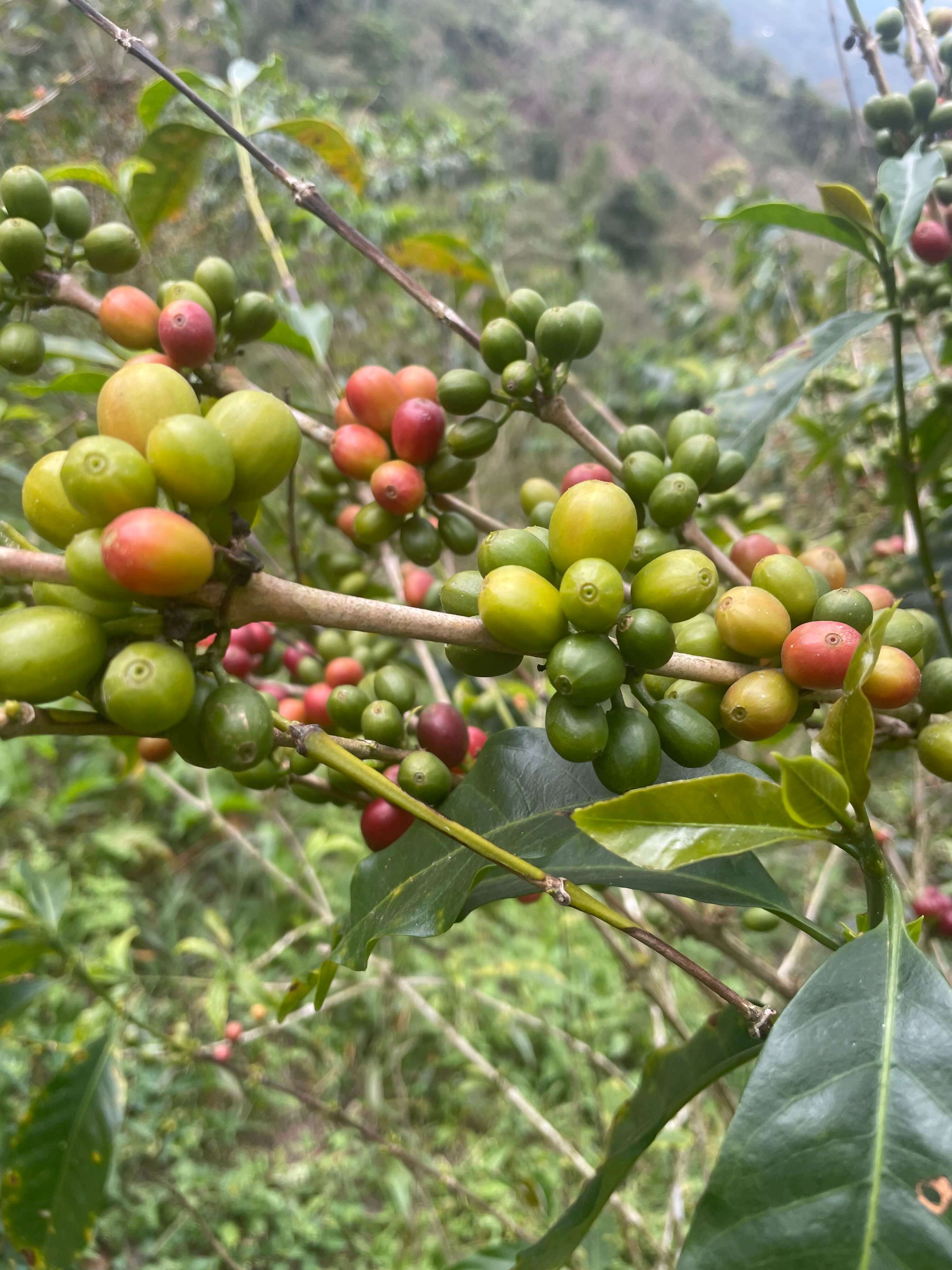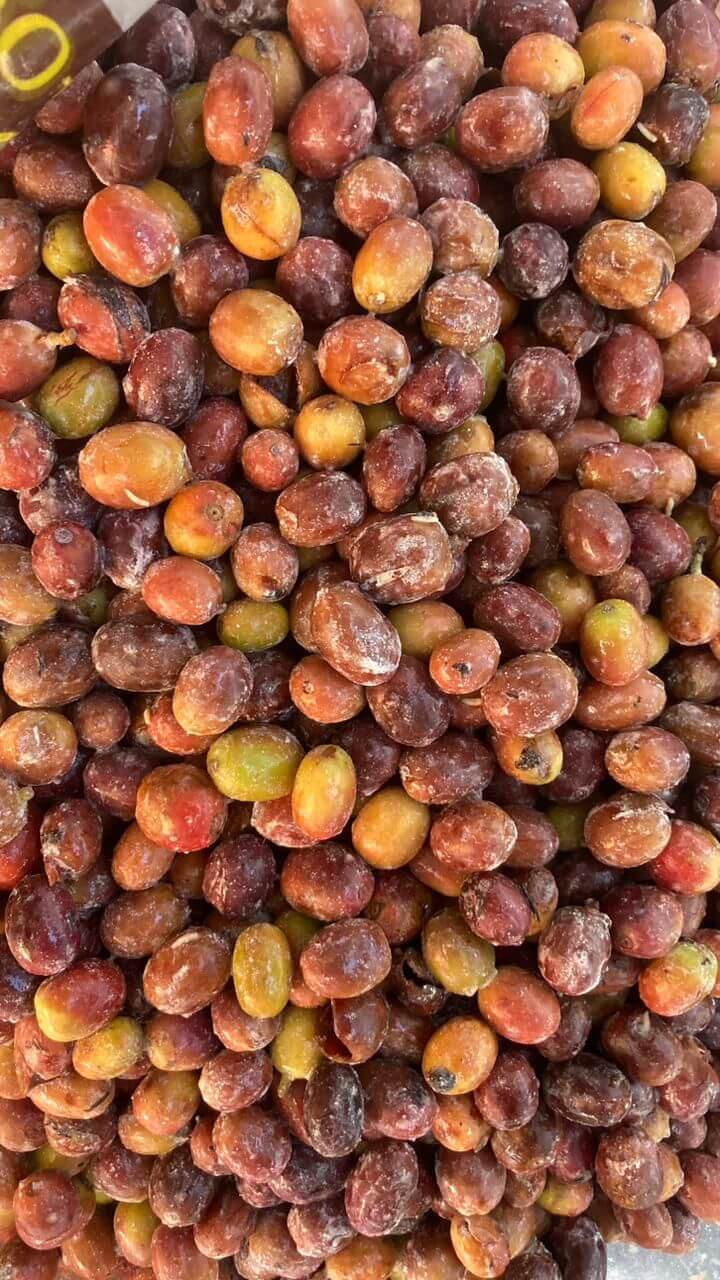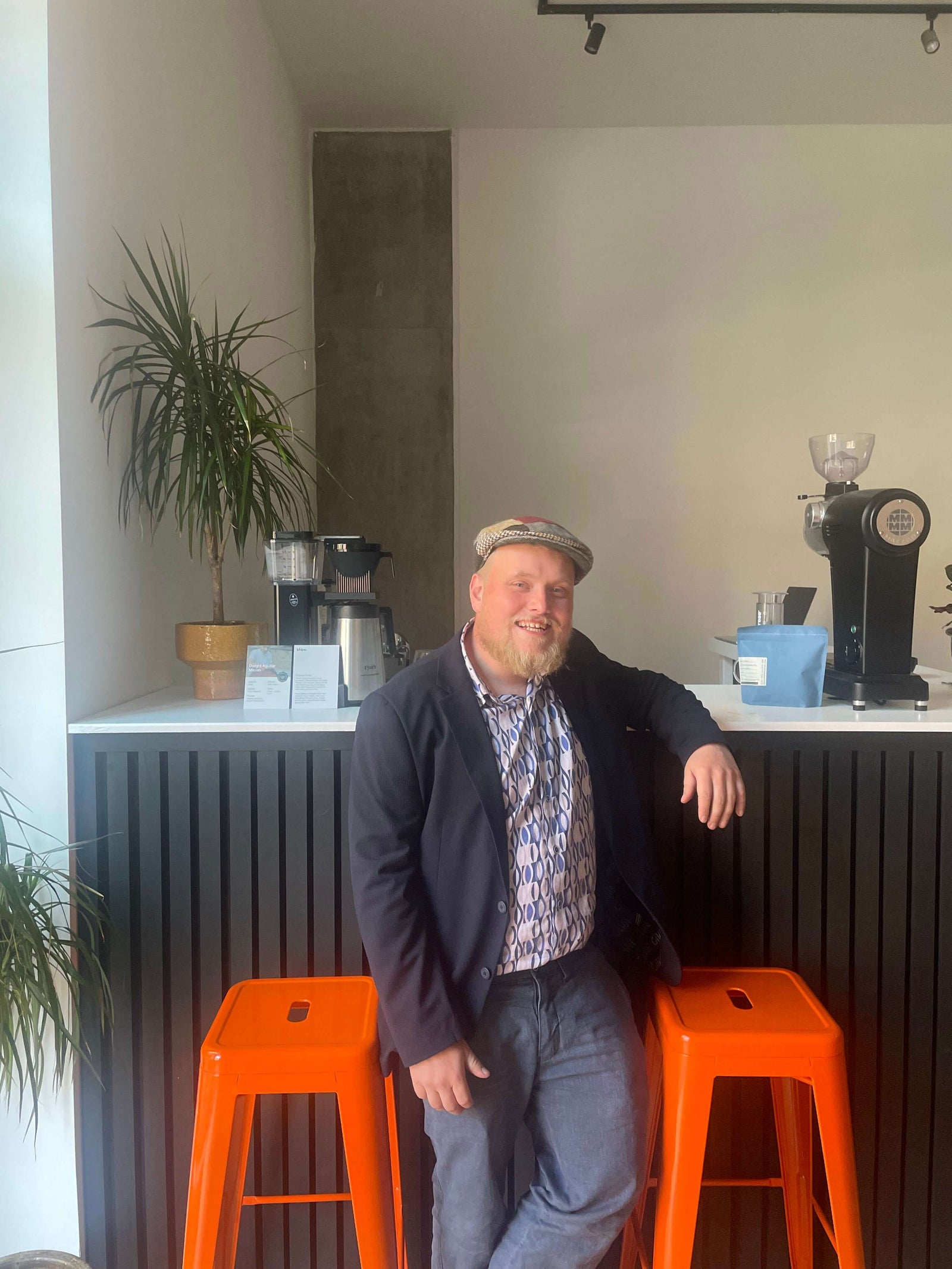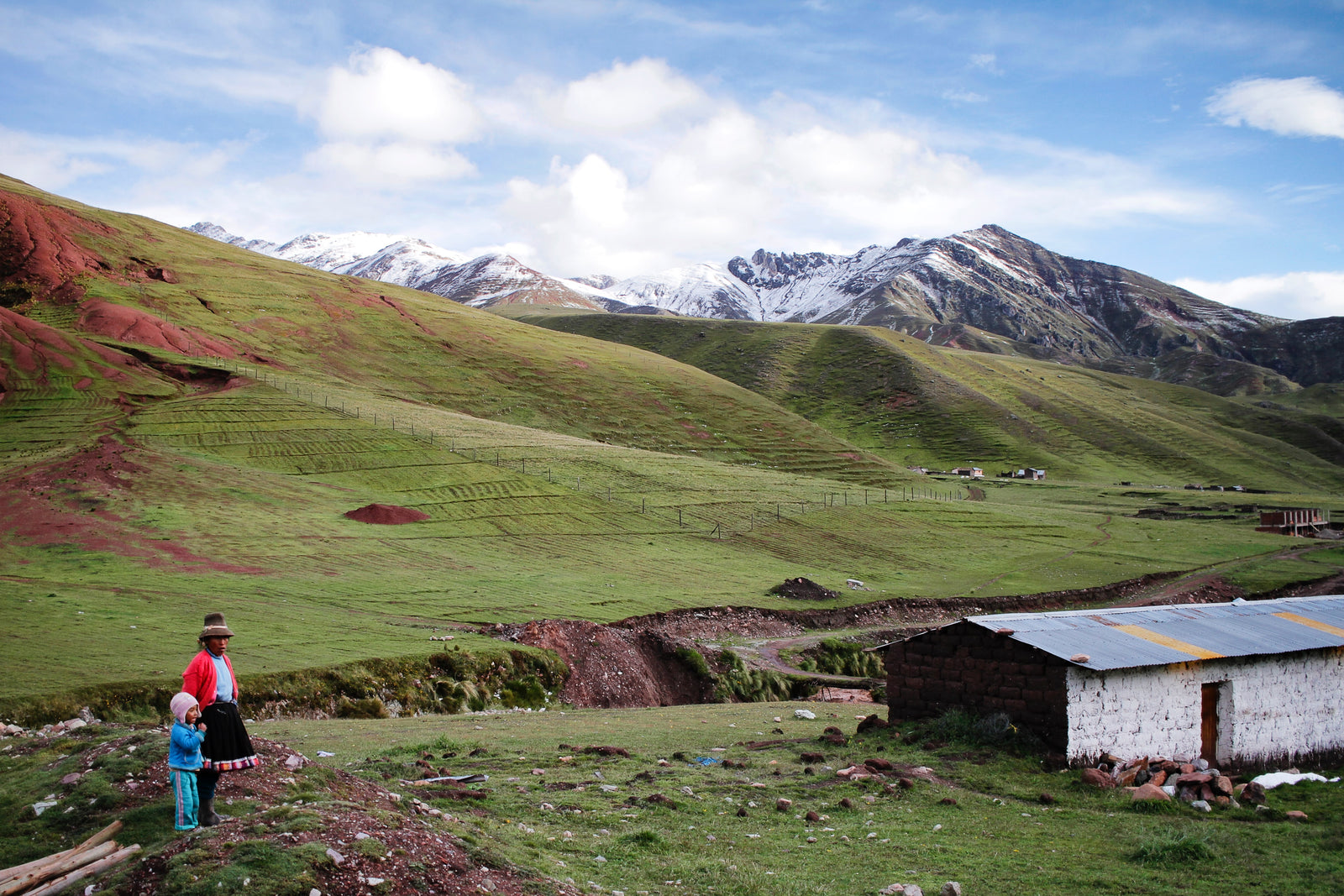For many producers, competitions like the Cup of Excellence (CoE) represent more than just a chance at a premium price—they’re a gateway to global visibility, validation, and motivation. But success in these arenas doesn’t come easily. It requires precise farm management, process innovation, and deep trust in one’s coffee.
This section focuses on the producers who have stepped into that space, some for the first time, others returning with refined strategies. Through their stories, we gain insight into the technical, emotional, and financial realities of entering and succeeding in high-stakes coffee competitions.

Entering the Cup of Excellence: Marcos Herrera’s debut in the CoE and his desire to put Lonya Grande on the map
A producer’s leap of faith, Marcos Herrera’s debut in the CoE and his desire to put Lonya Grande on the map
For any coffee producer, the Cup of Excellence (CoE) represents the pinnacle of recognition for quality and craftsmanship. For Marcos Herrera, finishing 14th in 2024 marked his first year participating in this esteemed competition, a journey that proved both challenging and rewarding.
The first step in entering the CoE is having a well-managed farm capable of producing coffee that meets the strict quality standards. Producers must estimate their potential yield and ensure they have a lot that meets the competition’s minimum required quantity. The coffee must also achieve a quality score of 87 SCA or higher to advance beyond the international stage.
Once a producer identifies a suitable lot, they must prepare a sample and submit it along with a completed technical sheet detailing essential information about the coffee, including its varietal, processing method, and farm details. This submission window typically runs from mid-August to the end of the month.
By early September, the list of classified samples will be published. If selected, the producer must transport the entire lot (500kg approx) to a designated collection point (Los Olivos, Lima) After completing the necessary documentation, the only step left is to wait for the competition results and the auction that follows.
Expectations and the decision to enter
Marcos entered the competition with the goal of placing in the top 20. However, his participation was about more than just ranking—it was about putting his region, Amazonas, and district, Lonya Grande, on the map.
“I wanted to show that my region has exceptional soils and producers capable of offering outstanding coffees,” he explains. “Since learning about the Cup of Excellence, I have always wanted to participate. That’s why I dedicated myself to planting high-quality coffees. This year, I finally had the volume needed to compete.”
The impact of success
Achieving success in his debut year brought numerous benefits. Beyond personal validation, Marcos found that placing in the competition significantly boosted his visibility within the coffee industry. “The marketing impact has been huge, both personally and within my community,” he says. “Many producers now approach me for advice on coffee processing techniques. There’s a lot of interest in learning more about quality production.”
Challenges along the way
While the competition itself is demanding, the greatest challenges come long before the coffee is submitted. According to Marcos, the entire cultivation and post-harvest process is where the real work lies. “We have to manage the farm carefully—timely weed control, correct fertilisation, harvesting at optimal ripeness, precise fermentation, and proper drying and storage. Each of these steps is crucial to producing a coffee that meets CoE standards.”
Looking ahead to next year
Encouraged by his first-year success, Marcos plans to enter the CoE again in 2025. This time, he hopes to place even higher.“My dream is to reach the top positions,” he says. “I’m considering blending in a small percentage of another variety I grow to create a unique profile. But that decision will be made closer to the competition, depending on how the harvest progresses.”
Marcos Herrera’s story is one of dedication, persistence, and a commitment to elevating the coffee from his region. His first-year success in the Cup of Excellence not only validates his hard work but also inspires other producers to pursue excellence in specialty coffee.
Two entries.
Two seasons.
Two very different results.
This is what growth looks like when it’s measured in both points and process.

Finca Artemira’s CoE journey: Ebert Huaman on the lessons of 2023 and how the team is preparing for a stronger return in 2025
Ebert Huaman from Finca Artemira reflects on what 2023 taught them and how they will be returning stronger in 2025
In 2023, it was their first year competing, and they exceeded their expectations by achieving 18th place. This milestone validated their efforts and motivated the whole farm and family to keep pushing boundaries.
In 2024, their experience was different. While they maintained the same commitment to excellence, they encountered new challenges that led them to reevaluate their strategies. The competition had grown stronger, and external factors, including climate variability, played a role. While they didn’t secure a spot in the top 30 this year, the experience has still been invaluable to them, offering lessons that will, and has shaped their approach moving forward.
In short, 2023 was a year of high achievements for the farm, while 2024 has been a period of learning and adaptation. Both years, despite differing results, have contributed significantly to their impressive growth.
Impact of 2023: Farm development and investment
The investment received in 2023 following their Cup of Excellence success has had a profound impact on Finca Artemira. It enabled them to:
- Enhance infrastructure, including the addition of solar dryers to improve post-harvest drying consistency.
- Upgrade their processing plant, allowing for better quality control and efficiency.
- Build and equip an on-site coffee laboratory, which now serves as a space to analyse and refine their coffee at the farm, optimising every stage from cultivation to final processing.
According to Ebert, these improvements have strengthened both their productivity and quality, positioning themselves for even greater success in future competitions.
Why they didn’t place in the Top 30 in 2024
Ebert believes that there were several factors that contributed to their lower ranking during 2024, below are few of the key factors:
1. Stronger competition: The Cup of Excellence attracts the finest coffees, and each year the quality threshold rises. Even slight variations in cup profile can make a significant difference in rankings.
2. Process optimisation: While they maintained high standards, some inconsistencies, perhaps in harvesting selection or fermentation adjustments, may have impacted the final cup score.
3. Climatic challenges: The 24/25 harvest season had unpredictable rainfall patterns which affected bean development and drying conditions, which may have influenced the overall cup quality.
He believes it was a combination of competition intensity and areas where they can refine their approach rather than any single factor.
Looking ahead: plans for the 2025 competition
We asked if they were looking to enter again in 2025 and their response was one with hope and confidence:
“Absolutely, we will be participating again next year. This year’s experience has given us clear areas for improvement, and we’re already implementing changes, including:
- Fine-tuning harvesting and selection to ensure greater consistency.
- Exploring fermentation and drying adjustments to enhance complexity and clarity in the cup.
- Leveraging our new coffee lab to analyse, taste, and adjust in real time, ensuring that each batch is meeting its full potential.
These refinements will strengthen our approach and help us return to the competition with an even more distinct and high-scoring coffee.”
A final reflection: The journey of Finca Artemira
Since Ebert and his two brothers founded Finca Artemira in 2015, their journey has been one of resilience, learning, and continuous growth. The challenges they’ve faced have made them stronger, shaping the way they approach coffee production.
Ebert was kind enough to express his gratitude to our partnership and he is grateful that we believe in their work, their coffee and taking it to the international stage.
“Their support has allowed us, and other Peruvian producers, to share our passion with the world. Thanks to these partnerships, we’ve been able to expand our reach and showcase the hard work behind every bean we produce.”
While 2023 brought the farm its first international accolades and significant investment, 2024 taught them about resilience, and how the future holds even greater opportunities. They remain committed to pushing boundaries and delivering exceptional Peruvian coffee to the world.

Competitions offer powerful recognition, but coffee is also defined by those who present it to the world: roasters, baristas, educators, and storytellers. In the final section, we turn to the cultural heart of Peruvian coffee, spotlighting the professionals shaping its image, both locally and globally.
Chapter 5: Coffee Culture & Industry Voices






